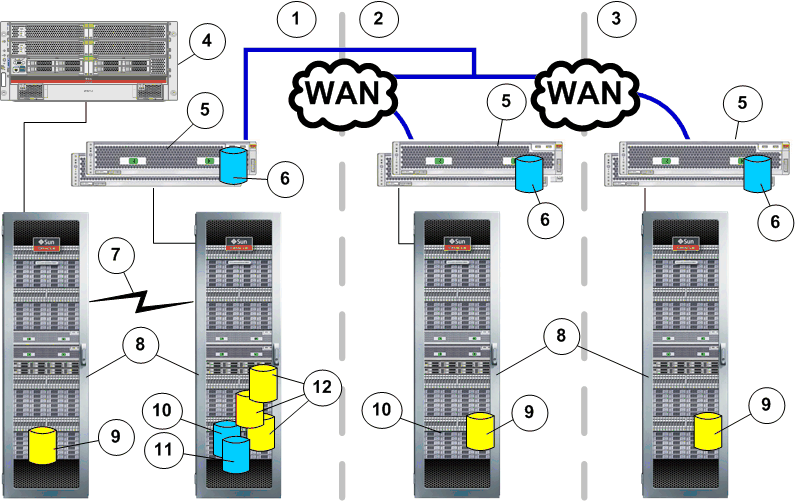Many‑to‑One replication provides the capability to replicate data from multiple source Oracle FS Systems to a single target Oracle FS System. The many‑to‑one configuration is useful for a consolidated disaster recovery facility across the enterprise, or for the consolidating data for backup purposes.
For example, a many‑to‑one replication configuration may consist of primary and secondary sites connected by the same extended SAN fabric that uses dense wavelength division multiplexing (DWDM), and another remote site connected to the primary through a WAN.
The SAN fabric connection permits remote synchronous replication while the WAN connection permits remote asynchronous replication to the target Oracle FS Systems. Refer to the Oracle MaxRep for SAN release notes for the recommended limits for remote asynchronous configurations.
Another example of many‑to‑one replication includes adding a secondary, or passive, Replication Engine to support the existing Replication Engine and to provide a high availability configuration. The primary Replication Engine and the secondary Replication Engine form an active‑passive cluster. The first Replication Engine in each clustered pair is in active mode. The second Replication Engine in each clustered pair is in passive mode, ready to take over if the active Replication Engine should fail.
